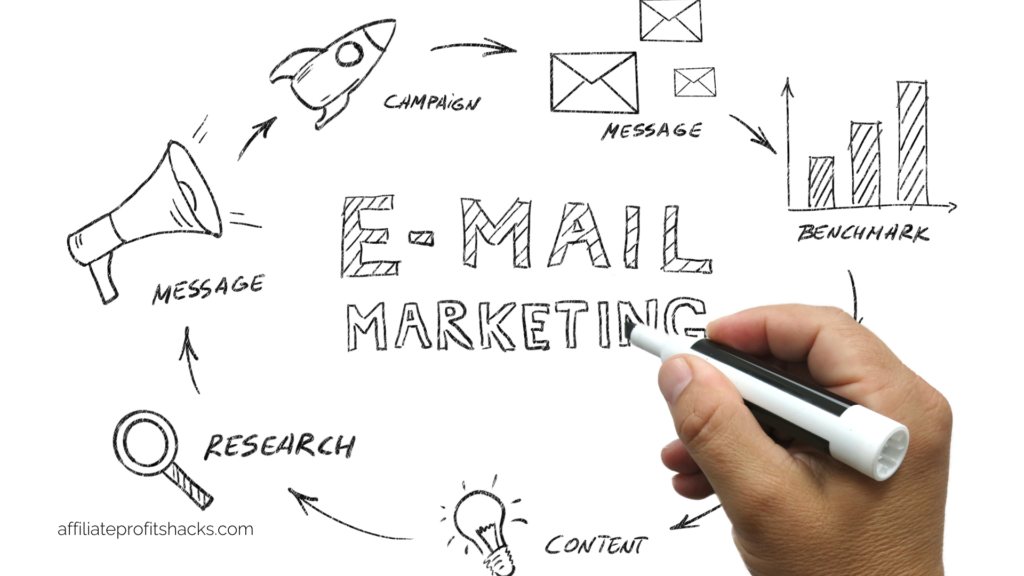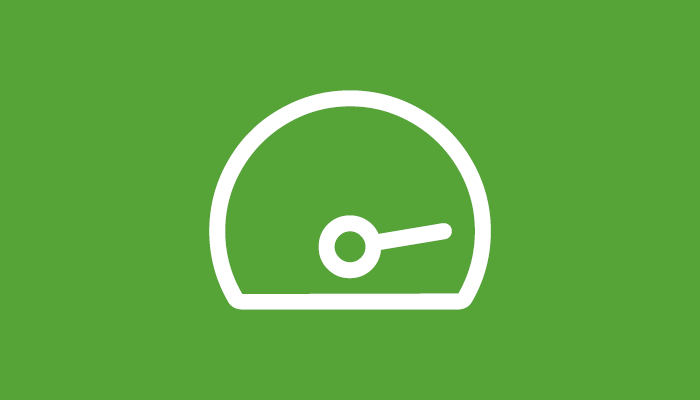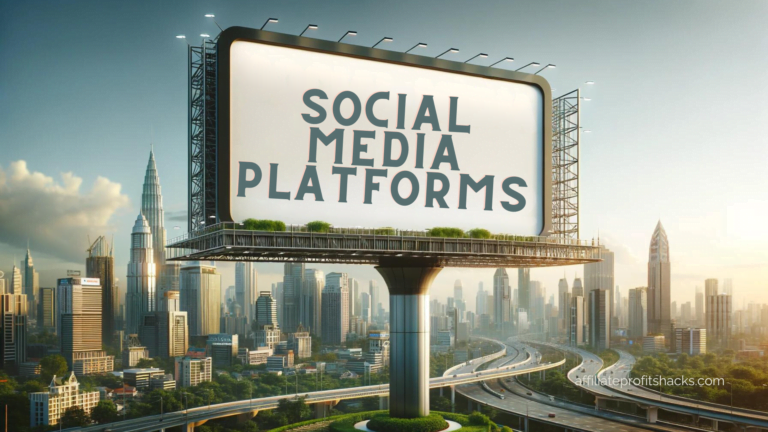Email Marketing Secrets for Higher Conversion Rates
Welcome to my article about email marketing secrets for higher conversion rates!
If you’re looking to boost your conversion rates, email marketing is a secret weapon you can’t afford to ignore. With its ability to reach a wide audience, engage customers, and drive sales, email marketing has proven an effective strategy for businesses of all sizes.
This article will uncover some of the top email marketing secrets that can help you achieve higher conversion rates. From creating compelling subject lines to optimizing email frequency, we will explore strategies and techniques that can significantly impact your email marketing success.
Best Recommended and Proven Way to Make Money Online – Click HERE for Instant ACCESS >>

By implementing these secrets, you can optimize your email campaigns to capture your audience’s attention and compel them to take action. Whether new to email marketing or looking to enhance your existing efforts, these tips will provide valuable insights to help you achieve higher conversion rates and drive business growth.
Creating Relevant Landing Pages
A good email marketing campaign relies on creating a seamless connection between your emails and relevant landing pages. When crafting your email content, you must lead your recipients to specific landing pages that offer a tailored experience and a clear call to action.
Landing pages provide a valuable opportunity to offer incentives and personalize content, which can significantly impact your email conversion rates. By aligning the content on your landing pages with the email message, you create a cohesive experience for your audience.
Reducing bounce rates is another important aspect of creating relevant landing pages. When recipients click through from your email, they should find themselves on a landing page that addresses their needs and expectations. By delivering what was promised in the email, you can maintain their interest and reduce the likelihood of them leaving immediately.
For example, when sending cart abandonment emails, the landing pages should direct recipients back to their abandoned carts. This acts as a gentle reminder and encourages them to complete their purchase.
By prioritizing the relevance of your landing pages, you can capture the attention of your email recipients, guide them toward taking the desired action, and increase your overall email conversion rates.
Benefits of Creating Relevant Landing Pages:
- Deliver a tailored experience for your email recipients
- Increase the chances of conversion by aligning the messaging between emails and landing pages
- Reduce bounce rates and keep recipients engaged
- Offer incentives and personalize content to entice action
- Improve the overall effectiveness of your email marketing campaigns
Compelling Subject Lines
In the world of email marketing, subject lines hold immense power. They are the first glimpse recipients of your email and play a crucial role in determining whether they open it. Crafting compelling subject lines is an art that can significantly impact your email open rates and ultimately increase your conversion rates.
When creating subject lines, make sure they are specific and direct. Avoid being vague or misleading, as this can lead to frustration and potentially cause recipients to mark your emails as spam. Instead, use actionable trigger words that compel readers to take action. Consider phrases like “limited-time offer,” “exclusive deal,” or “free shipping.”
It’s essential to strike a balance and avoid using spammy words or overpromising in your subject lines. While using buzzwords or exaggerated claims to grab attention may seem tempting, it can decrease credibility and authenticity. Focus on delivering value and setting realistic expectations to build trust with your audience.
Another strategy to make your subject lines stand out in crowded inboxes is to incorporate emojis. Emojis can evoke an emotional response and add visual appeal to your subject lines. However, use them sparingly and ensure they are relevant to the content of your email. Overusing emojis or including irrelevant ones can appear unprofessional or gimmicky.
To illustrate the power of subject lines, consider the following example:
Subject Line: Hurry! Limited Time Offer – Up to 50% Off Your Favorite Products! 😍
This subject line combines the elements of urgency, exclusivity, and a positive emotional trigger. It communicates the offer and the time sensitivity and uses an emoji to grab attention and create a sense of excitement. Emails with subject lines like these often yield higher open rates and increase the likelihood of recipients clicking through to explore the offer further.
Remember, compelling subject lines are a gateway to your email content. They set the tone for recipients’ expectations and determine whether they engage with your message or move on. Investing time and creativity into crafting captivating subject lines can optimize your email marketing strategy for higher open rates and ultimately drive conversions.
Effective Use of Visuals
Utilizing visuals in your email campaigns can significantly impact engagement and average conversion rates. People are naturally drawn to visuals; incorporating them into your emails can effectively convey your desired message. Creative visuals can catch the reader’s eye and make your emails more engaging, whether it’s images, illustrations, GIFs, or videos.
Using relevant and high-quality visuals is crucial, ensuring they align with your brand message. When selecting graphics for your emails, consider how they enhance the overall aesthetic and support the content. By choosing visuals that resonate with your audience, you can capture their attention and increase the chances of conversions.
Including visually appealing elements like product images, infographics, or even a short video can help break up the text-heavy nature of emails and make them more visually appealing. Visual aids can provide additional context, showcase the features and benefits of your offerings, and make your emails more memorable.
When using visuals, it’s essential to strike a balance. Overloading emails with too many graphics can hinder loading times and distract from the main message. Find the right combination of visuals and text that effectively communicates your intended message.
Remember, not all email clients or devices display visuals the same way. Make sure to test your emails across multiple platforms and devices to ensure they maintain their visual appeal and functionality.
Best Recommended and Proven Way to Make Money Online – Click HERE for Instant ACCESS >>
Incorporating visuals strategically into your email campaigns can lead to higher engagement rates and ultimately improve your average conversion rate. Experiment with different types of visuals, test their effectiveness, and continuously refine your approach to find what resonates best with your audience.
Clear Calls to Action
When driving conversions in your email marketing campaigns, one of the most critical elements is the call to action (CTA). A well-crafted CTA clearly states what you want readers to do and encourages them to take the desired action. To make your CTAs effective in generating conversions, consider the following strategies:
- Be Powerful: Your CTAs should be strong and impactful, compelling readers to take immediate action. Use action verbs and persuasive language to motivate them.
- Be Clear and Short: Avoid confusion by keeping your CTAs concise and to the point. Use simple language that leaves no room for ambiguity.
- Be Actionable: Make sure your CTAs are actionable and easily understandable. Use verbs that communicate the action you want readers to take, such as “Shop Now,” “Sign Up Today,” or “Get Started.”
- Personalize your CTAs: Personalized CTAs have significantly improved conversions by over 200%. Tailor your CTAs based on readers’ location, interests, demographics, and other parameters to grab their attention and increase the likelihood of them taking the desired action. For example, if you have a clothing store, you can create personalized CTAs like “Shop Our Latest Collection for Women in New York” or “Get Exclusive Discounts for Men in California.”
Implementing these strategies will help you create compelling CTAs that drive conversions and motivate readers to take the desired actions. Regularly test and optimize your CTAs to ensure they achieve the desired results.
Example:
Imagine you have an online travel agency targeting adventure enthusiasts. Instead of using a generic CTA like “Book Now,” you can personalize your CTA based on the reader’s location and interests, such as “Book Your Thrilling Scuba Diving Adventure in Hawaii” or “Explore the Jungles of Costa Rica on Your Next Vacation.” This level of personalization will make your CTAs more engaging and relevant to your audience, increasing the likelihood of conversions.
Creating a Sense of Urgency
When it comes to email marketing, creating a sense of urgency can be a powerful tool to prompt readers to take action quickly. By leveraging limited-time offers and exclusive deals, you can make your readers feel like they are getting something special. Consider adding countdown clocks and highlighting limited availability to emphasize the urgency further.
The sense of urgency you create in your email campaigns can drive readers to purchase or take the desired action sooner rather than later. Whether it’s a limited-time discount, an exclusive offer for a select group of subscribers, or a countdown clock ticking away, it’s essential to make your readers feel they shouldn’t miss out on the opportunity.
With a visually appealing countdown clock placed strategically in your email, your readers will be reminded of the limited time to take advantage of the offer, creating a sense of urgency that encourages them to act promptly. This can significantly boost your email conversion rates and drive immediate results.
By utilizing the power of limited-time offers, exclusive deals, and countdown clocks, you can create a sense of urgency that compels readers to take action. Don’t miss out on this opportunity to leverage the psychology of urgency and drive better results from your email marketing campaigns.
Personalization for Better Engagement
Personalization is key for better engagement and higher conversion rates in email marketing. By tailoring your email content based on customer data, you can make your emails more relevant and engaging for your recipients.
Personalization can be as simple as using your customer’s name in the email or targeting them based on their location, demographics, interests, and other relevant parameters. This creates a sense of connection and makes your readers more likely to respond positively to your email.
For example, tailored email content that addresses your customer’s needs and interests can help establish a stronger connection. Understanding their preferences and desires allows you to create personalized email campaigns that resonate with your audience.
Using customer data to personalize your email content can significantly impact engagement and conversion rates. According to a study by Experian, personalized emails deliver six times higher transaction rates than non-personalized emails.
Not only can personalized emails drive higher engagement, but they can also increase sales and customer loyalty. When recipients receive emails that speak directly to their needs and desires, they are likelier to take the desired action, whether purchasing or participating in a special promotion.
So, how can you achieve effective personalization in your email marketing campaigns? Start by leveraging the customer data you have available. Utilize marketing automation tools and customer relationship management (CRM) systems to collect and organize data on your customers.
Once you have the necessary customer data, you can segment your email lists and create targeted campaigns that speak directly to each segment. This allows you to tailor your messaging to each group’s specific interests and preferences, increasing the likelihood of engagement and conversions.
Remember, personalization goes beyond just inserting a name into an email. It’s about understanding your customers and delivering relevant content tailored to their needs. By taking the time to personalize your email content, you can significantly improve your engagement and conversion rates.
Benefits of Personalization in Email Marketing:
- Increased engagement and open rates.
- Improved click-through and conversion rates.
- Enhanced customer loyalty and satisfaction.
- Greater ROI on email marketing efforts.
- Ability to deliver relevant and targeted content.
By leveraging customer data and tailoring your email content, you can create personalized experiences that resonate with your audience and drive them to take action. Take advantage of the power of personalization in your email marketing campaigns and watch your engagement and conversion rates soar.
Optimizing Email Frequency
Finding the right email frequency is crucial for engaging your audience and maximizing conversions while controlling the unsubscribe rate. Determining the ideal email frequency requires considering various factors, such as your campaign goals, the customer purchase lifecycle, audience segmentation, and industry best practices.
It’s important to balance staying top of mind with your subscribers and avoiding overwhelming them with too many emails. Sending emails too frequently can lead to lower engagement and higher unsubscribe rates. Conversely, sending emails too infrequently may cause your audience to forget about your brand or lose interest in your offers.
Best Recommended and Proven Way to Make Money Online – Click HERE for Instant ACCESS >>
A/B testing can be valuable in finding the optimal email frequency for your specific audience. By comparing different email frequencies, you can gather engagement and conversion rate data to determine which frequency adds the most value to your recipients.
Remember that email frequency is not a one-size-fits-all approach. It may vary depending on your industry, the preferences of your target audience, and the type of content you are sending. Some audiences may prefer daily updates, while others may find a weekly or monthly digest approach more appropriate.
Consider these tips for optimizing email frequency:
- Monitor engagement metrics: Keep a close eye on key metrics such as open, click-through, and conversion rates. These metrics provide valuable insights into how your audience responds to your emails and can guide you in adjusting your email frequency accordingly.
- Segment your audience: Divide your subscribers into segments based on demographics, interests, and purchase behavior. Each segment may have different preferences and tolerances for email frequency. You can deliver more relevant content and improve engagement by tailoring your email frequency to each segment.
- Consider the customer purchase lifecycle: Different customer journey stages may warrant different email frequencies. For example, during the onboarding phase, you may want to send more frequent emails to help new customers familiarize themselves with your products or services. You can reduce the frequency once they become regular customers while maintaining regular communication.
- Observe industry best practices: Research what email frequency is typically recommended in your industry. This can serve as a starting point for finding the right balance. However, it’s important to remember that every audience is unique, so testing and analyzing your own data is key.
- Provide value in every email: Whether you send emails daily, weekly, or monthly, ensure each email provides value to your recipients. Offering exclusive content, discounts, or personalized recommendations can incentivize engagement and reduce the likelihood of subscribers unsubscribing.
- Monitor your unsubscribe rate: While some unsubscribes are inevitable, closely monitor your unsubscribe rate as you adjust your email frequency. If you notice a significant increase in unsubscribes, it may indicate that your frequency needs further optimization.
You can optimize your email frequency by continuously monitoring engagement metrics, segmenting your audience, and testing different frequencies to keep your audience engaged and increase conversions. Remember, finding the right email frequency is an ongoing process that requires adapting to your audience’s preferences and behavior.

Tracking and Optimization
Tracking and analyzing data is crucial for better conversion rates in your email marketing campaigns. Metrics like open and conversion rates provide valuable insights into your email performance and can guide your optimization efforts. By monitoring and understanding these metrics, you can make data-driven decisions to improve your email marketing strategy.
A/B testing is another powerful tool that can help you optimize your campaigns. By comparing different versions of your emails and analyzing the results, you can identify what resonates best with your specific mailing list. This allows you to refine your marketing efforts and increase your chances of higher conversion rates.
In addition to tracking and A/B testing, optimizing your email design is essential. Emails that are visually appealing and well-designed are more likely to catch the reader’s attention and encourage engagement. Ensuring that your emails are mobile optimized is equally important, as more and more people are accessing their emails on their mobile devices. Creating responsive designs that adapt to different screen sizes allows you to reach a wider audience and improve conversion rates.
Best Recommended and Proven Way to Make Money Online – Click HERE for Instant ACCESS >>
It’s essential to stay updated on industry trends and best practices to stay ahead of the game. The world of email marketing is constantly evolving, and what worked yesterday may not work today. By keeping an eye on emerging trends and adopting new strategies, you can ensure that your email marketing campaigns are always optimized for maximum conversion rates.
Thanks for taking the time to read until the end! Read this article, Build a High-Converting Email List from Scratch, for more insights into Email Marketing.







